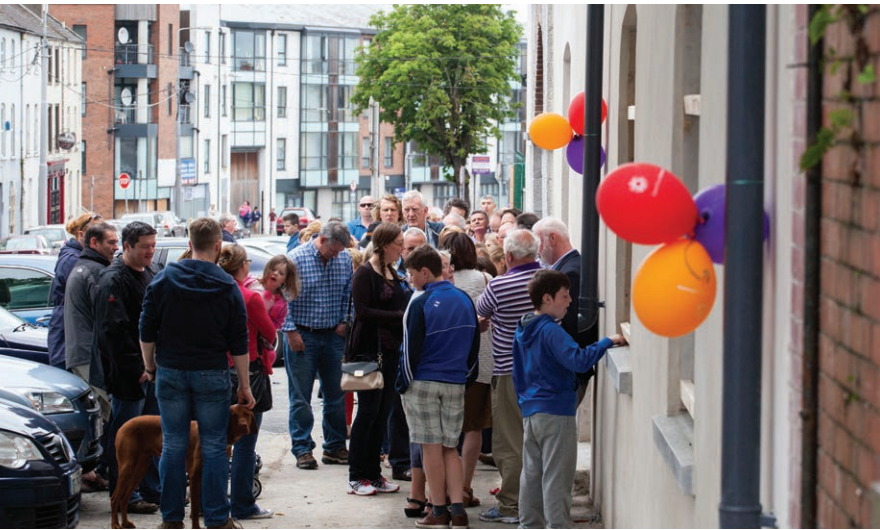After decades of stalled or failed attempts to revitalize Limerick, Ireland, a review of the current Limerick Regeneration Framework Implementation Plan (LRFIP) has found that the significant amount of work being carried out in the four regeneration areas across Limerick city is finally having a very positive impact on the communities.
The comprehensive review covered the two years since the LRFIP was adopted by councillors in February 2014, and is divided into the three pillars – social, economic and physical. (Social Pillar review covers 2012 to 2014)
Headline figures show:
- More than 300 jobs have been created as a direct result of Limerick Regeneration funding 16,871 participants in support services across 47 projects. 56% were under 17 years in 2014;
- Increased numbers using services at local community hubs;
- Two thirds of 1,500 homes earmarked for thermal upgrading either completed or plans in place;
- 30 projects increasing connectivity to the wider community;
- €12.2 million total employment income impact in 2015 up over a quarter on 2014;
- Increased attendance at school and other services and higher numbers from DEIS schools progressing to further level;
- Almost 50 per cent of new build homes either completed or at design stage;
- Safer communities working in partnership with communities, policing and CCTV. Youth crime decreased significantly.
The guiding principle underpinning all the work being carried out is the vision statement of the LRFIP. That is to create “safe and sustainable communities of opportunity where people of all ages enjoy a good quality of life, a decent home and a sense pride about their place. Well serviced and attractive neighbourhoods will be physically connected and fully integrated with the social, economic and cultural life of Limerick.”
The pillar reviews were carried out by Dr. Eileen Humphreys, University of Limerick (Social Pillar); Mark O’Connell, W2 Consulting (Economic Pillar), while the Physical Pillar was reviewed internally by Limerick City and County Council.
The review has found that there is a very high level of co-operation between all the various public sector organisations and agencies, all working together, to deliver the programmes, with community involvement increasing as the programmes bed in.
A series of recommendations have been made across all three pillars. They include continued support and development of Community Enterprise Centres as Community Hubs, enhanced community involvement and maintenance of safety within areas, focus on reducing youth unemployment, target specific skills development, increase private sector involvement, progress the Coonagh to Knockalisheen Road and M7/ M20/ N18 access into Southill.

